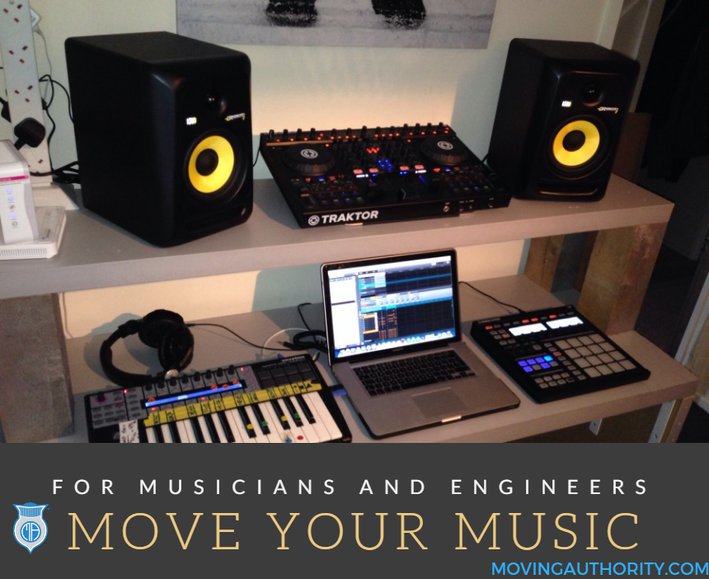Moving and Storage for Musicians and Audio Engineers
Options For Musicians & Audio Engineers
- Proper Packing Materials are Necessary
- Consider Asking for Help From Professional Audio Companies
- These Steps are Vital
- Moving Instruments
1. Proper Packing Materials are Necessary
If you do not have the original packaging for speakers, soundboards, or microphones, the best idea is to wrap them in bubble wrap and the quilted blankets used by movers. These can be purchased a hardware and moving stores. Speakers are delicate and should be stored on their sides, and placed firmly in between other large and secure items to ensure they don’t tip. Keep in mind that audio cables must be rolled up and stored properly. It’s best to wind them circularly, with the natural bend of the cable, and not create tension by pulling against the natural flow of the cable.Once rolled up, cables should be secured with Velcro ties or twist ties to ensure they don’t unroll en route to your next destination.
2. Consider Asking for Help From Professional Audio Companies
If the equipment is more extensive, it may be best to work with a professional audio visual company that specializes in moving equipment. The first thing to do is make an inventory of all chords, stands, and tools that make up your system and label everything with numbers. That way, when the moving company packs it, they are able to keep track of each piece, and when you unpack it on the other side of the move, you can reconnect everything appropriately. You should also double check that you have the manuals handy, in case something happens during the move, or things don’t seem to work when you reconnect everything.
3. These Steps are Vital
For musicians and audio engineers, there is nothing more precious or important in the world than instruments and equipment. When it comes to moving, there are certain steps that can be taken to ensure that delicate equipment travels safely. Most likely, you will want to stay as close to your equipment as possible, so it may be best, if you’re moving with a car, to pack it in the car instead of shipping it or leaving it to the movers. When it comes to the specifics of packing, the more blankets and bubble wrap, the better.
4. Moving Instruments
When it comes to moving instruments, it may be a good idea to purchase a hard plastic instrument case, similar to the ones used to transport instruments on airplanes. These are made specifically for instruments and can be treated as an investment, rather than a moving cost. Cases made for hard travel can last for decades, and cushion instruments in the safest ways, avoiding delicate pressure points. Make sure to mark them with “fragile” stickers and tags so that movers or airlines know that the cargo within is a specialized instrument. There are many companies that specialize in moving musical instruments, from guitars to pianos, especially in bulk. If you need to ship a large number of delicate instruments, it’s best to work with shipping specialists who are trained to transport instruments. And it is always a good idea to purchase insurance. Remember that if you aren’t moving into a new space immediately, make sure the storage facility you use is temperature controlled. Instruments can warp in sustained heat, or break if it’s too dry. Audio equipment can become faulty if it isn’t maintained at room temperature.
Comments
Jean Francois
Feb. 23, 2022, 12:38 a.m.
I have a lot of chaos pads and various other synthesizers, they have delicate buttons and I was hoping someone could recommend a way to protect music equipment during a move, specifically in this sense?
Arnel Cato
Feb. 23, 2022, 12:38 a.m.
Is it okay to trust a moving company with thousands of dollars of equipment that may become damaged or lost? Is there a way for me to ensure that the movers will have to pay for the items if they were to lose or damage them significantly? If not, I may have to rent my own truck to help move my audio equipment from one area to another. Let me know if you have any suggestions on what I can do in this situation. Thanks!
Add Comment